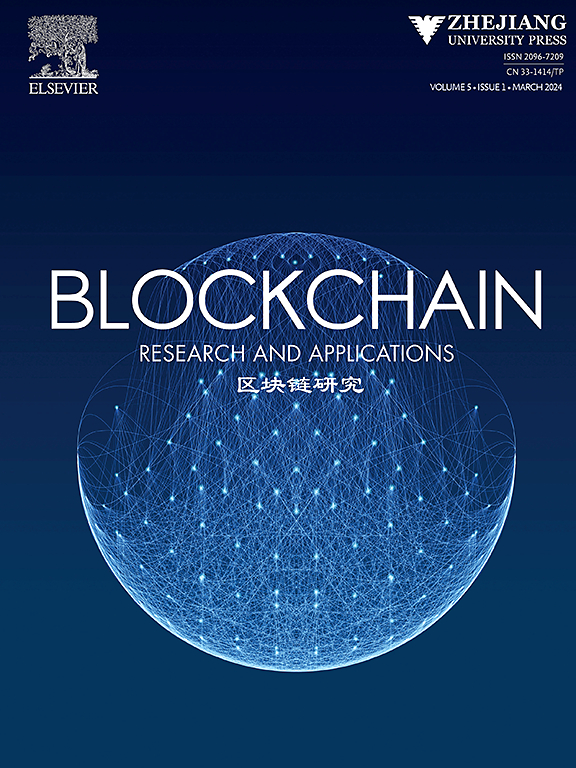揭示智能合约漏洞:使用增强的遗传算法和生成基准数据集来分析智能合约漏洞
IF 5.6
3区 计算机科学
Q1 COMPUTER SCIENCE, INFORMATION SYSTEMS
引用次数: 0
摘要
随着区块链网络的出现,已经从传统合约过渡到智能合约(SCs),这对于维持这些网络内的信任至关重要。以往分析SCs漏洞的方法通常缺乏准确性和有效性。其中许多方法,如基于规则的方法、机器学习技术和神经网络,由于数据可用性有限,也难以检测复杂的漏洞。本研究介绍了一种检测、识别和分析SC漏洞的新方法,包括两个关键组成部分:一种名为SCsVulLyzer (V2.0)的更新分析仪和一种先进的遗传算法(GA)分析方法。该分析器从不同类别中提取240个特征,而增强型遗传算法则明确设计用于分析SC漏洞,采用惩罚适应度函数、精英保留和自适应突变率等技术为每个漏洞创建详细的配置文件。此外,由于缺乏具有足够样本和多样化漏洞的全面验证和评估数据集,本工作引入了一个名为bccc - scsvull -2024的新数据集。该数据集由111,897个Solidity源代码样本组成,确保了所提出方法的实际验证。此外,还建立了三种类型的分类法,包括SC文献综述、分析技术和特征提取。这些分类法提供了对信息的系统分类和分析,提高了所提出的分析技术的效率。通过严格的测试和实验,我们提出的方法具有更高的精度和准确性。该方法不仅在评价参数方面取得了很好的效果,而且在时间和空间复杂度方面也证明了它的高效率。此外,分析技术的概念使我们的模型高度透明和可解释。这些有希望的结果突出了基于ga的分析在改进SC漏洞检测和识别方面的潜力,有助于增强区块链网络的安全性。本文章由计算机程序翻译,如有差异,请以英文原文为准。
Unveiling smart contract vulnerabilities: Toward profiling smart contract vulnerabilities using enhanced genetic algorithm and generating benchmark dataset
With the advent of blockchain networks, there has been a transition from traditional contracts to Smart Contracts (SCs), which are crucial for maintaining trust within these networks. Previous methods for analyzing SCs vulnerabilities typically suffer from a lack of accuracy and effectiveness. Many of them, such as rule-based methods, machine learning techniques, and neural networks, also struggle to detect complex vulnerabilities due to limited data availability. This study introduces a novel approach to detecting, identifying, and profiling SC vulnerabilities, comprising two key components: an updated analyzer named SCsVulLyzer (V2.0) and an advanced Genetic Algorithm (GA) profiling method. The analyzer extracts 240 features across different categories, while the enhanced GA, explicitly designed for profiling SC vulnerabilities, employs techniques such as penalty fitness function, retention of elites, and adaptive mutation rate to create a detailed profile for each vulnerability. Furthermore, due to the lack of comprehensive validation and evaluation datasets with sufficient samples and diverse vulnerabilities, this work introduces a new dataset named BCCC-SCsVul-2024. This dataset consists of 111,897 Solidity source code samples, ensuring the practical validation of the proposed approach. Additionally, three types of taxonomies are established, covering SC literature review, profiling techniques, and feature extraction. These taxonomies offer a systematic classification and analysis of information, enhancing the efficiency of the proposed profiling technique. Our proposed approach demonstrated superior capabilities with higher precision and accuracy through rigorous testing and experimentation. It not only showed excellent results for evaluation parameters but also proved highly efficient in terms of time and space complexity. Moreover, the concept of the profiling technique makes our model highly transparent and explainable. These promising results highlight the potential of GA-based profiling to improve the detection and identification of SC vulnerabilities, contributing to enhanced security in blockchain networks.
求助全文
通过发布文献求助,成功后即可免费获取论文全文。
去求助
来源期刊
CiteScore
11.30
自引率
3.60%
发文量
0
期刊介绍:
Blockchain: Research and Applications is an international, peer reviewed journal for researchers, engineers, and practitioners to present the latest advances and innovations in blockchain research. The journal publishes theoretical and applied papers in established and emerging areas of blockchain research to shape the future of blockchain technology.

 求助内容:
求助内容: 应助结果提醒方式:
应助结果提醒方式:


